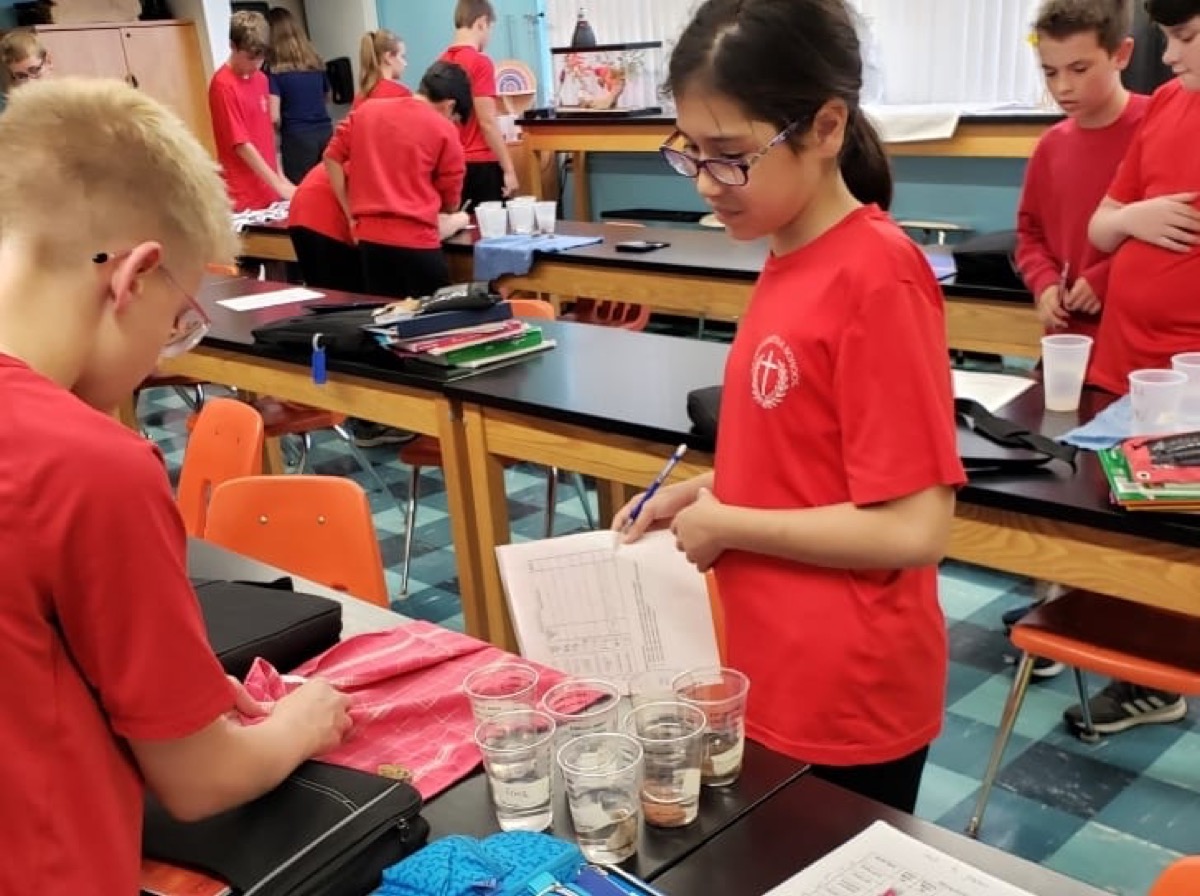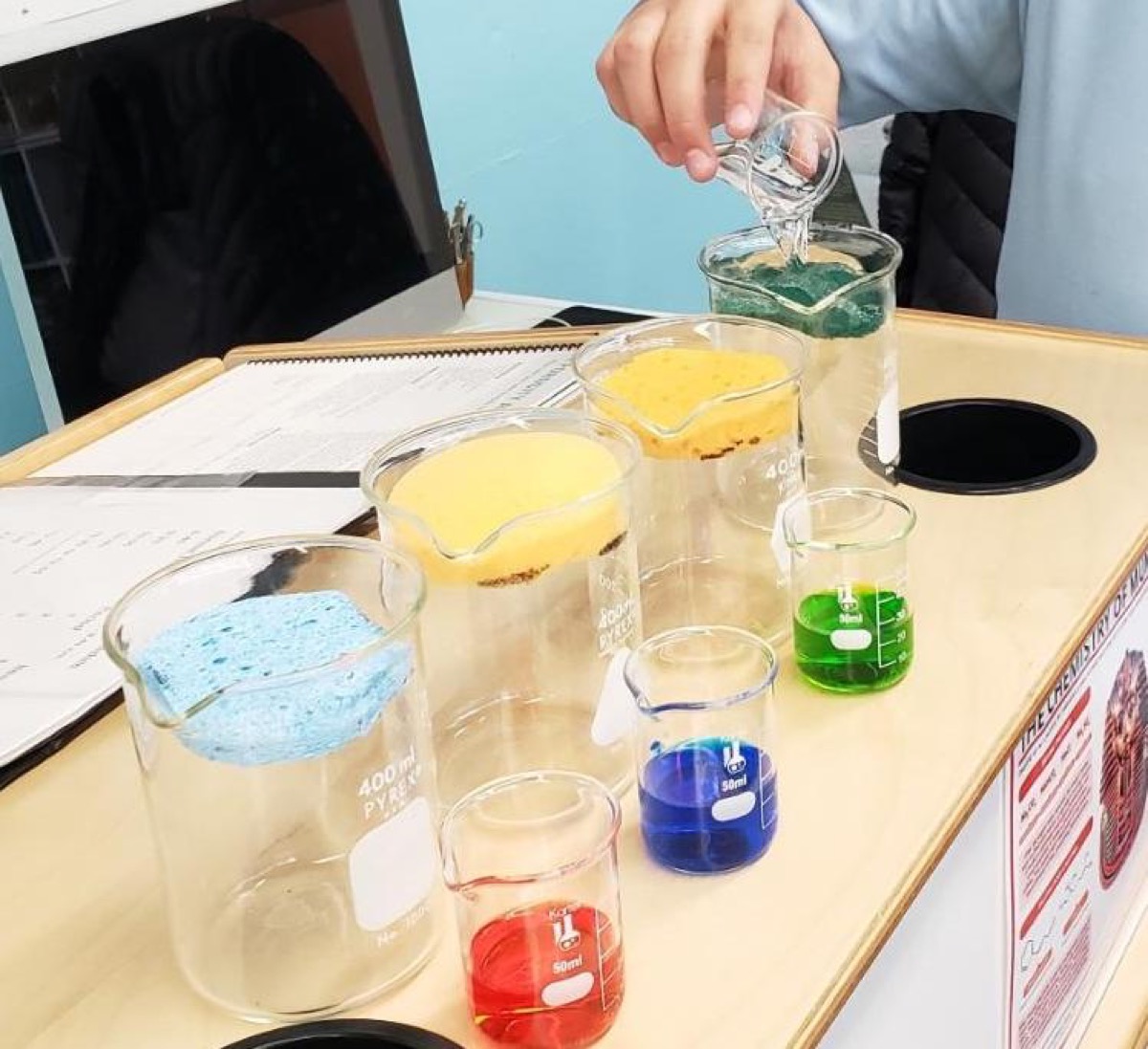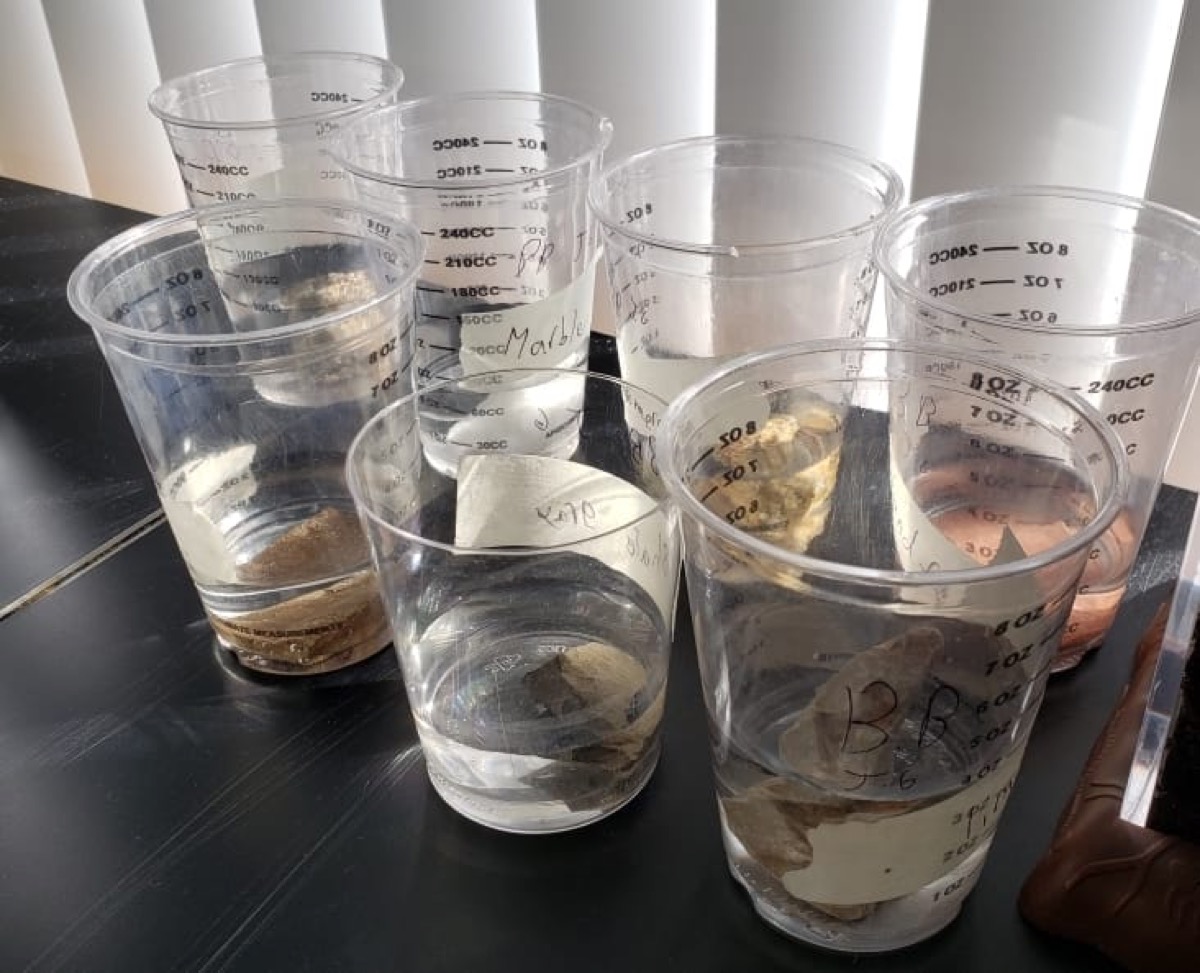Holes in rocks

Porosity and permeability affect the movement and storage of fluids in rocks and sediments. Porous rocks, such as sandstone and limestone, contain tiny spaces, called pores, that can hold natural gas, water and crude oil, like a sponge. After crude oil and natural gas are formed, they tend to migrate upward through the rock layers due to pressure within the earth. Permeability measures resistance to the flow of a fluid or gases through a rock. Shale, a source rock, is generally more porous, but has extremely low permeability and traditionally it had been a poor producer of hydrocarbons. Evolving well stimulation techniques have rendered low-permeability shale reservoirs more permeable.
To help his 7th grade students at St. Agatha understand these concepts, science teacher David Hughes turned to the lessons he received at the Ohio Oil and Gas Energy Education Program's STEM workshop. The Migration and Trapping unit contains several activities that cover these topics.
Hughes used lesson 2.2, Porosity and Permeability, as a whole-class demonstration with the students' help. This allowed him to save time and give an overview lesson on porosity and permeability before having the students work in groups to do the Baking Rocks lab.
Using supplies he received at the workshop, Hughes cut sponges to fit the size of the beakers' openings. He then cut the thicker sea and microfiber sponges to roughly the same thickness as the blue sponge and scrubber sponge, so that the different thicknesses of the sponges would not affect the outcome of the lab. He also put different food coloring in 25ml of water to be poured over each sponge so that it was easier to see.

For lab 2.1, Baking Rocks, Hughes used Shale (gray), Shale (oil), Limestone (compact), Granite (gray), Sandstone (red),
Conglomerate, and Marble (white). His students first predicted which rocks would be most porous from least to greatest, massed the rocks, and then placed them in individual cups of water. Because of time issues
they had to leave the rocks in the water for 24 hours, rather than the hour called for in the lab.

The next day the students removed the rocks, massed them, and recorded the final ranking. They then created a bar graph comparing the before and after masses of their rock samples. "This particular lab did not turn out like I thought," said Hughes. "There were no major differences in the before and after masses in the rock samples. I don't
know if I needed to bake my rock samples for a longer period of time or use more precise measuring devices, use different rocks, or if they soaked for too long a time. The kids used digital scales but maybe they were not precise enough."
Despite the inconclusive results, Hughes said his students were very excited to do the labs. "The Porosity and Permeability lab worked better at showing the difference between porosity and permeability because it was easier for the kids to see the water pass through/not pass through the sponge. It was also easier for them to see the sponge be wrung out and measured in a graduated cylinder." This made them able to easily grasp the concepts being taught.
Hughes said he found the workshop helpful to him as an educator. "I really enjoyed the workshop and learned much more about geology than I knew before. This workshop helped me gain more knowledge about geology and oil and gas, and I also have good lessons to try with my students that they will learn from and appreciate."